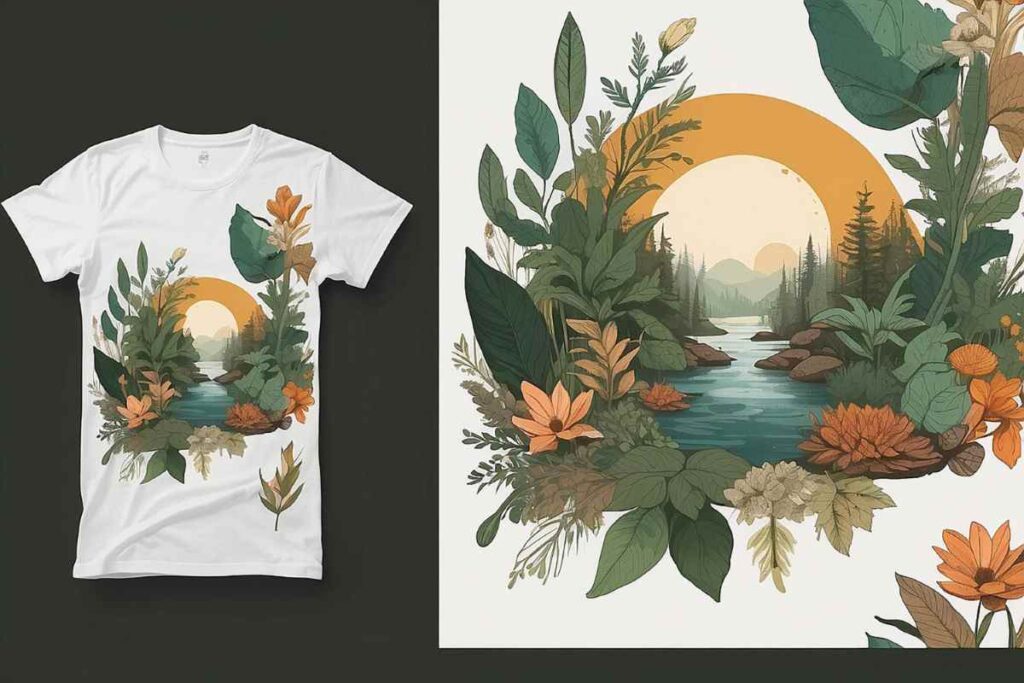DTF transfers, or Direct to Film transfers, have emerged as a game-changer in the realm of custom fabric printing. This innovative technique allows crafters and designers to create vibrant and intricate designs that were once challenging to achieve with traditional methods. By utilizing high-quality film and heat application, DTF transfers enable a smooth transition from digital designs to stunning fabric embellishments. Whether you’re looking to personalize apparel for a small business or just trying to spruce up your wardrobe, understanding how to use DTF transfers can elevate your creative projects to new heights. In this guide, we’ll explore essential DTF printing tips and techniques to help you master the art of fabric design and produce eye-catching DTF transfer designs.
Direct to Film transfers, often referred to as DTF printing or film transfer printing, have become popular among DIY enthusiasts and professional designers alike. This modern printing method captures the essence of creativity by allowing users to craft detailed designs that come alive on various fabric types. By employing a straightforward heat application process, creators can transform their concepts into tangible products with high accuracy and durability. As you dive into the world of film transfers, you’ll discover a variety of options for creating stunning and unique fabric designs that stand out. This exploration of DTF transfer techniques not only enhances your skills but also opens up a realm of possibilities for your artistic pursuits.
Understanding DTF Transfers: The Future of Fabric Printing
Direct to Film (DTF) transfers are transforming the fabric printing landscape, offering designers a remarkable way to create intricate and vibrant designs. This method involves printing images on a special film that is later applied to fabric under heat. Because DTF allows for high definition and fine detail, it is becoming the preferred choice for custom apparel, enabling even small print runs to thrive in today’s market.
Moreover, one of the key benefits of DTF transfers is their versatility across different fabric types, such as cotton, polyester, and blends. This adaptability means that you can easily design clothing or accessories for diverse applications, ranging from sportswear to fashion apparel, ensuring that your creativity knows no bounds.
Frequently Asked Questions
How to use DTF transfers effectively for fabric printing?
To use DTF transfers effectively, start by preparing high-resolution designs, ideally in vector formats like AI or SVG. Ensure your printer settings are adjusted for DTF printing, and choose high-quality DTF transfer films that suit your fabric type. Finally, apply the transfer using a heat press at the correct temperature and timing to achieve vibrant results.
What are the best practices for creating designs with DTF transfers?
Best practices for creating designs with DTF transfers include using high-resolution images of at least 300 DPI, selecting vibrant colors, and ensuring your file is in a compatible format. Testing your materials and printer settings before starting full production can help ensure the best outcomes.
What materials should I choose for DTF transfer designs?
Select high-quality DTF transfer films that complement your fabric type, whether cotton, polyester, or blends. Testing the transfer on sample fabrics will also help determine how the design adheres and performs after multiple washes.
What printing tips should I follow for optimal DTF transfers?
For optimal DTF transfers, fine-tune your printer settings, focusing on temperature, speed, and ink saturation specifically for DTF films. Ensure you use a printer that supports DTF transfer films for the best adhesion and print quality.
How can I ensure a successful heat transfer when using DTF transfers?
To ensure a successful heat transfer with DTF transfers, use a heat press set to approximately 325°F (163°C) for about 12 seconds. Adjust times and temperatures based on your fabric and the specific transfer type to achieve the best bond.
What are some common mistakes to avoid when creating DTF transfer designs?
Avoid common mistakes like using low-resolution images resulting in pixelation, neglecting proper printer settings, and skipping sample tests on fabrics. Ensuring your transfer process is well-practiced and refined will lead to higher quality results in your DTF designs.
| Key Consideration | Description |
|---|---|
| Design Preparation | Start with high-resolution images (300 DPI or higher) for clarity and vibrancy. |
| Optimal File Formats | Use vector formats like AI, SVG, PDF for scalability; high-res raster formats are also acceptable. |
| Choosing the Right Materials | Select high-quality DTF transfer films compatible with your fabric type for optimal results. |
| Printing Settings | Adjust printer settings such as temperature, speed, and ink saturation for the best print quality. |
| Effective Heat Transfer | Use a heat press at the recommended temperature (325°F for 12 seconds) and adjust based on fabric. |
| Post-Processing | Allow cooling, then gently peel film; consider re-pressing for durability. |
Summary
DTF transfers are a revolutionary method in fabric printing that enable creators to produce stunning and intricate designs. This technique, which involves printing designs onto a special film to be heat-applied to various textiles, allows for exceptional color vibrancy and detail that traditional methods often cannot achieve. By understanding key considerations, such as design preparation, optimal file formats, and appropriate materials, you can master DTF transfers and elevate your fabric projects to a new level of creativity and professionalism.


